- Sichuan -
Called the Land of Abundance, is in abundance of diverse natural resources and cultural heritages, and has been one of the hot destinations for many travelers to China. Central Sichuan is also home to the giant panda. To the north the visage changes into a fairyland of alpine valleys and blue-green lakes. Sichuan’s Tibetan face appears as you venture west. This is Kham, one of the former Tibetan prefectures: a vast landscape of plateau grasslands and glacial mountains where Tibetan culture still thrives and you’re certain to have your most challenging, yet most magical, experiences.
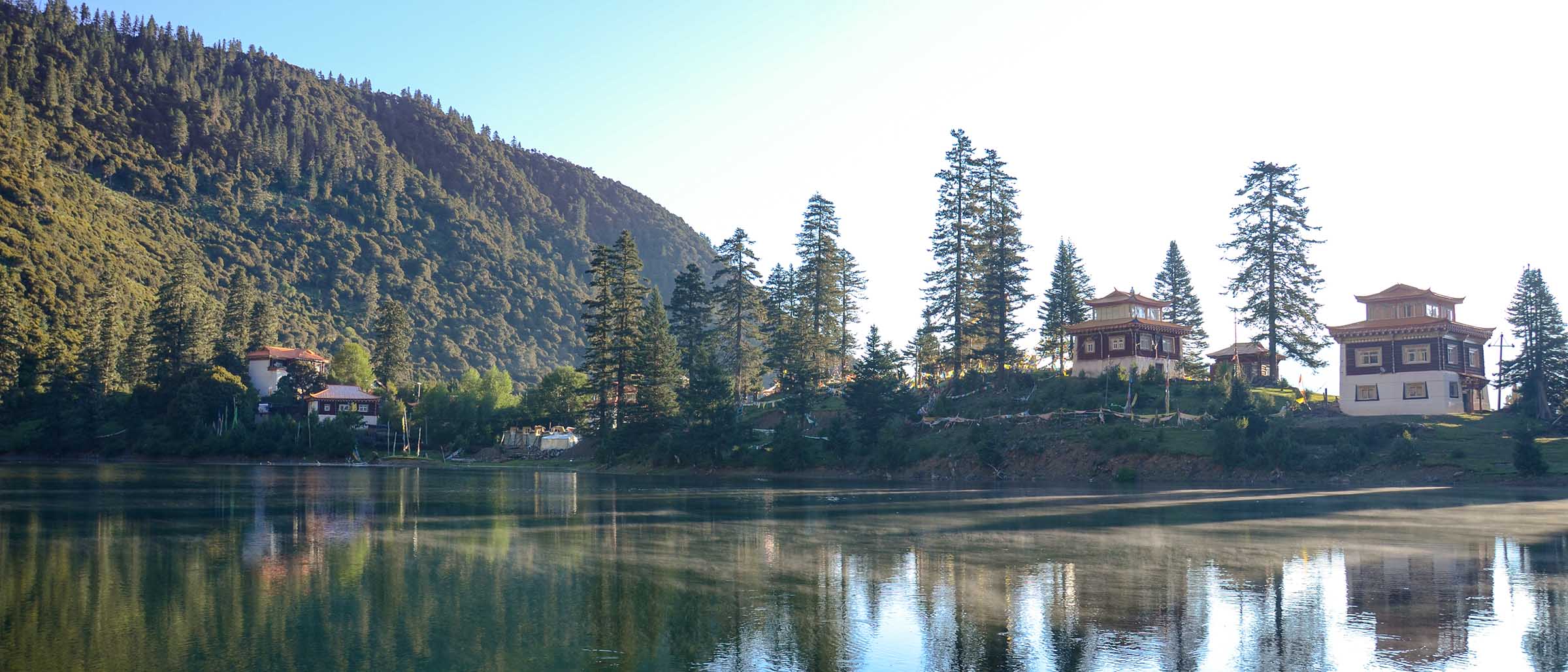
Basic Information
Chinese Name: 四川(Sichuan)
Location: the upper reach of the Yangtze River and the hinterland of Southwest China.
Provincial Capital: Chengdu
Acreage: about 485,000 square kilometers.
Famous Cities: Chengdu, Leshan, Jiuzhaigou, Kangding
Population: 83,750,000 (2019) in total; 55 ethnic groups with a population of 4.91 million(2010) in Sichuan.
Major Ethnic Group: The Han, Yi, Zang, Qiang, Miao, Tujia, Lisu, Naxi, Buyi, Bai, Zhuang, and Dai are indigenous ethnic groups in the Province.
Sichuan History
The Sichuan Basin and adjacent areas of the Yangtze watershed were a cradle of indigenous civilizations dating back to at least the 15th century BC, coinciding with the Shang in northern China. The region had its own distinct religious beliefs and worldview. The earliest culture found in the region through archaeological investigation is the Baodun culture (c.2700–1750 BC) excavated in the Chengdu Plain.
Concise History Thereafter
Han Dynasty (206BC-220AD) – The area became the center of world's lacquer craftwork and the birthplace of tea culture with advanced technology of Shu Brocade.
Five Dynasties period (907-960) – the emperor of Later Shu planted hibiscus all round the city wall, hence Chengdu got the nickname, Furong Cheng (Hibiscus City), or Rong Cheng for short.
Tang Dynasty (618-907) – Engraving typography was first invented and used here.
Song Dynasty (960-1279) – Chengdu led the list, being a foremost prosperous city on a par with Yangzhou which had the busiest water transport and port in China at that time. The earliest paper currency in the world 'Jiao Zi' was issued there during the Northern Song Dynasty (960-1127).
Ming (1368-1644) and Qing (1644-1911) dynasties – The previously flourishing city vanished during the war during the late Ming Dynasty but its economy made a gradual recovery during the Qing Dynasty. Through two expansions during Kangxi and Qianlong Periods, a grand new city evolved once more. Following the Opium War, the city went into a decline and its role overtaken by Chongqing.
In modern times, the city was re-established as the capital of Sichuan Province in 1928, and has remained so following the foundation of the PRC.
Sichuan Culture
As early as in the trace of human activity, the Wushan people and Ziyang people once lived in Sichuan. A saying goes like this, “The people from western and eastern Sichuan shared the same ancestors.” As Chinese civilization developed, the culture of Sichuan glowed with dazzling light in successive dynasties. Up until now, Sichuan remains a renewed and important part of Chinese culture.
With long history and strong cultural background, Sichuan boasts profound culture with various distinctive features. Characterized by incredible Sichuan Opera, fabulous Sichuan Cuisine, tea culture, and the local leisure life, Sichuan culture provides great fun and interesting activities to enjoy.
In the markets and streets as well as the village roads throughout Sichuan, you can see teahouses with unique Sichuan styles. Sitting in bamboo chairs, people gather around wooden tables, hold special tea wares exclusively owned by the teahouse and take a sip of fragrant tea.
Sichuan Grography
Sichuan province is located in western central China. The easternportion of the province has countless winding and spectacular rivers, most of them tributaries flowing southward to the Yangtze (Chang Jiang) — including the Min River. The western border with Tibet (Xizang Zizhiqu) follows the basin between the north-south running Ningjing and Shaluli mountain ranges in the west and east respectively. Sichuan also shares a border with Qinghai in the northwest and Shaanxi in the northeast. East of the Shaluli range, the Daxue range runs roughly parallel. East of the Dadu River from Daxue Shan, the Qionglai Mountains run northeast with the eastern edge falling sharply and ending the Tibetan Plateau. South of Qionglai Shan the Tibetan Plateau ends similarly with the southeast running Daliang Mountains. Sichuan also borders Hubei, Hunan, and Gansu provinces
Sichuan Climate
Sichuan is located in the transitional zone between Qinghai-Tibet Plateau and the eastern plains and therefore has complex and diverse climates with rather obvious regional differences and vertical changes. There are distinct disparities between east and west Sichuan as well.
The overall characteristics of Sichuan’s climate can be summarized as follows: monsoon climate is obvious and rain and heat happens in the same seasons; regional climate differences are prominent in that the east is characterized by warm winters, early springs, hot summers, rainy autumns, much cloud and fog, little sunshine and a long growing season while the west is characterized by coldness, long winters, almost no summer, sufficient sunshine, concentrated rainfall and distinct dry and rainy seasons; vertical climate changes are significant and climate types are varied; meteorological disasters happen in various forms with a high frequency and large scope, which are mainly droughts, rainstorms, floods and cold weather.e:
The best time to travel in Sichuan is in spring and autumn, especially in February and March, July to October. Spring is dry in Sichuan lowlands and south area, with little but concentrated precipitation on the plateau. Summer is hot in Sichuan lowlands and south area, but on the plateau, there seems no summer. In July, the temperature has reached 25ºC to 29 ºC in the lowlands, 11 ºC to 17 ºC on the plateau, and 22 ºC to 26 ºC in the south. Autumn is rainy season in Sichuan lowlands and south area, but is with strong sunshine on the plateau. Winter is warm in Sichuan lowlands and south area, but a little cold on the plateau. In January, the temperature may be 3 ºC to 8 ºC in the lowlands, -9 ºC to 3 ºC on the plateau, and 8 ºC to 13 ºC in the south.
Tourism Resources
Called the Land of Abundance, is in abundance of diverse natural resources, and has been one of hot destinations for many travelers to China.
It's fitting that an ancient form of opera and magic called bianlian (face-changing) originated here, for Sichuan is a land of many guises. Capital Chengdu shows a modern face, but just beyond its bustling ring roads you'll find a more traditional landscape of mist-shrouded, sacred mountains, and a countryside scattered with ancient villages and cliffs of carved Buddhas.
Central Sichuan is also home to the giant panda, the most famous face in China. In the south, expect a veil of history and a muted beauty that sees far fewer travellers than the rest of the region.
To the north the visage changes again into a fairyland of alpine valleys and blue-green lakes. Sìchuan’s Tibetan face appears as you venture west. This is Kham, one of the former Tibetan prefectures: a vast landscape of plateau grasslands and glacial mountains where Tibetan culture still thrives and you’re certain to have your most challenging, yet most magical, experiences.Most of western Sichuan, rich in tourism resources, still remains untapped and awaits the exploration by visitors.Once stepping on the Land of Abundance, you can enjoy the fun of travel as much as you can.
You can appreciate a wide variety of beautiful landscape including sacred & mysterious mountains, fairyland of alpine valley, blue-green lakes, vast landscape of plateau grassland, glacial mountains where Tibetan culture still thrives, beautiful waterfalls, limestone caves, evergreen bamboo forests…
Hot Destinations: Chengdu, Leshan, Emeishan, Dujiangyan, Daocheng, Kangding, Ganzar...
World Heritage Sites: Jiuzhaigou Valley Scenic Area, Huanglong Scenic Area, Leshan Giant Buddha, Mount Emei, Dujiangyan Irrigation System, Mount Qingcheng, Sichuan Giant Panda Sanctuaries (like Wolong Panda Reserve)
Other Popular Attractions: Mount Siguniang, Yading Scenic Area, Danba Tibetan Village, Xinduqiao, Hailuogou Glacier, Dagu Glacier, Ruoergai Grassland,
Featured Activities: Panda volunteering, Sichuan food cooking, hiking & walking, kung fu learning, photography, cultural travel, Buddhism & Taoism travels…
Sichuan Cuisine
Represented by the local dishes of Chengdu and Chongqing, Sichuan cuisine is a style of Chinese cuisine originating in the Sichuan Province of southwestern China. As one of China's Four Major Styles of Cooking, Sichuan cuisine features spicy, tongue-numbing, savory, delicious, oily and heavily seasoned flavor. Sichuan cuisine enjoys a time-honored history and is well-reputed home and abroad. In 2010, Chengdu was declared a “City of Gastronomy” by UNESCO Creative Cities Network.
Known as the "heavenly country", Sichuan highlights its abundance of food and natural resources. Therefore, Sichuan cuisine features the well-arranged and enriched seasonings, particularly the use of garlic, ginger, chili peppers, as well as the unique Sichuan prickly ash. All these seasonings create the characteristic pungency and spiciness of Sichuan cuisine.
Statistics show that the number of Sichuan dishes has surpassed 5,000. Some representative dishes include Kung Pao Chicken, Mapo Tofu, Fish-flavored Pork Shred, Twice Cooked Pork and Sichuan Hotpot.
Sichuan Festivals
As the land of abundance in China, Sichuan also has many ethnic minorities that boast brilliant and colorful festivals that worthy your time during your travel in Sichuan.
Litang horse racing festival
August 1st
The horse racing festival is held on August 1st annually on Litang County of Ganzi Tibetan Autonomous Prefecture of Sichuan Province. On that day, the herdsmen wearing splendid attire gather on Litang from far and near, celebrating the festival joyfully together. On the racing field, spectators can admire the galloping horses, breathtaking horse skill performances, unique plateau landscape with rich ethnic characteristics and an ocean of happiness. During the festival, there are huge crowds of people and a number of tents are set up on the grassland. Besides, a grand Buddhist ceremony is also held during the festival every year.
Xichang Torch Festival
Jun. 25th(lunar calendar)
Xichang Torch Festival of the Yi nationality is held annually on the 25th day of the six lunar month of the traditional Chinese calendar, lasting for three days. It is the traditional festival of the Yi nationality for driving away evil spirits and praying for a prosperous year. On that day, the local people and tourists from many other places gather there, dancing and singing joyfully in praise of the brilliant national culture and spirit. Xichang is the largest area in China, inhabited by the Yi nationality with rich ethnic customs. On the first day, the local people satisfy their stomach with mutton, beef and pure wine. On the second and third day, the climax of the festival reaches and people of all ages dressed in splendid attire gather together. The men participate in the traditional competitive sports, such as bullfight, horse racing and wrestling, while women are singing and dancing. At night, all the people holding torches sit together around the bonfire, dancing and rejoicing with wild excitement overnight. Thus, the torch festival is also celebrated as “the oriental Carnival”.
Siguniang Mountain Worship Festival
May 5th of lunar calendar
Siguniang Mountain Worship Festival is held on the May 5th of Lunar Calendar. On this day, local Tibetan (Jiarong Tibetan) from all different villages will dress their traditional clothes and gather together to celebrate it. The ancient religious rituals and joyful folk songs and dances will be performed to worship a harvest year.
Zigong Dinosaur Lantern Festival
Jan. 7th-Jan 15th of lunar calendar
The Dinosaur Lantern Festival in Zigong city is held around the Spring festival, which can be dated back to Tang (618-907) and Song (960-1279) Dynasties. During the festival, the China’s colorful traditional lantern made of bamboo, silk, paper and glass bottles will displayed, together with the colorful modern-style lanterns.
Mount Emei
Chinese name: 峨眉山 ( E Mei Shan)
Location: Mingshan Road South, Emeishan city, Sichuan Province.
Ticket: Entrance ticket CNY160.00, sightseeing bus to Leidongping CNY90.00, round-trip cable car to Golden summit CNY120.00, round-trip cable car to Wannian Temple CNY110.00, Entrance ticket of Wannian Temple CNY10.00.
Estimated tour time: 1-3 days
Recommended time for visit: Autumnal Shades of red and gold in October; Azalea blossom during May-Jun; Snow view and Skiing during Dec-Feb.
Nearby attractions: Leshan Giant Buddha, Qiliping International Holiday Resort.
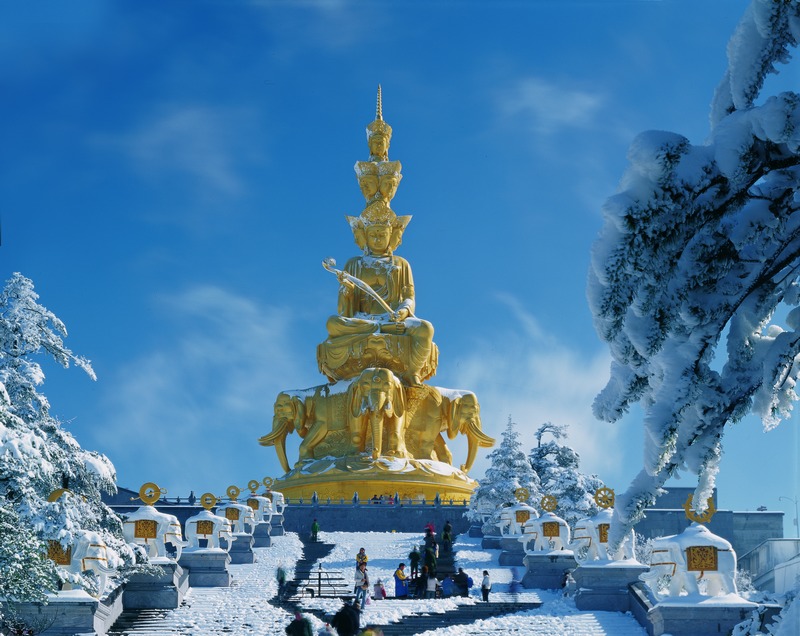
Brief Introduction of Mount Emei
Emei Mountain is situated in the southwest of Sichuan Basin, about 150km away from downtown Chengdu. It was listed together with Leshan Giant Buddha as a world natural and cultural heritage site by UNESCO in 1996. The mountain is famous for its natural scenery and Buddhist Culture. There is a popular saying about its beauty in China. It goes that no mountain under heaven can rival Mount. Emei in its elegance and beauty.
The mountain is known as the Kingdom of Plants and the Paradise of Creatures. Its ecological environment nurtures numerous kinds of plants and species of creatures. The forest coverage in the mountain is 87%. It is defined into five vegetation belts according to vertical zones. The five vegetation belts are a subtropical evergreen broad-leaved forest (below 1,500 meters above sea level), an evergreen and deciduous broad-leaved mixed forest, a coniferous and broad-leaved mixed forest, a sub-alpine coniferous forest and a sub-coniferous shrubs. The number of verified plant species in the mountain is about 3,200, occupying 10% of the total in China. Emei Mountain is inhabited by over 2,300 species of creatures, comprising 51 mammals, 256 birds, 34 reptiles, 33 amphibians, 60 fishes, 42 oligochaetes and over 1,000 insects. The four wonder of plants and creatures in the mountain orchid, azalea, monarch butterfly and monkey.
The mountain is shrouded in ever-hanging mist, clothed with fir trees, pines and cedars. A picturesque landscape is created with lofty crags, cloud-kissing precipices, dancing butterflies, singing birds, murmuring streams, blooming azaleas, snaking footpaths and monasteries sheltered by verdant trees. The whole mountain is dressed in emerald in spring, embellished with gorgeous azalea flowers in summer, covered by multi-colored forest in autumn, and snow-wrapped in winter. Emei Mountain is also celebrated for its four wonders of natural phenomenons on the Golden Summit. The four wonders include the sun rise, the sea of clouds, the Buddhist Hallo, and the sacred lamp.
As the holy land of Samantabhadra Bodhisattva, Mount. Emei is rich in Buddhist culture. It is one of the Top 4 Buddhist mountains in China. The other three are Jiuhua Mountain, Wutai Mountain and Putuo Mountain. Samantabhadra is one of the four most popular Bodhisattvas in Mahayana Buddhism. According to Huayan Scripture, the meaning of Samantabhadra infers that his moral conduct is boundless and immeasurable. His name indicates universal benevolence. He is in charge of helping people to realize their good wishes. He rides a six-tusked white elephant. The six tasks symbolize the Six Perfections of Mahayana Buddhism, including the Perfection of Generosity, the Perfection of Morality, the Perfection of Patience, the Perfection of Energy, the Perfection of Meditation, the Perfection of Wisdom. These are guides for practice of Mahayana Buddhism. Buddhism spread to Emei Mountain in the Jin Dynasty(265-420). It is said that Samantabhadra Bodhisattva revealed himself in the mountain many times. That is the reason why Emei Mountain has become the holy land of Samantabhadra.
The altitude ranges from 530 meters(1739 feet) to 3,099 meters(10167 feet) above sea level. It covers an area of 154 km2. The whole mountain consists of three scenic areas, including Baoguo Monastery Scenic Area, Wannian Monastery Scenic Area and the Golden Summit Scenic Area. There were over 100 monasteries in the mountain in ancient time. However, 26 monasteries are preserved. Baoguo Monastery, Wannian Monastery and Huazang Monastery are commonly considered as the top three monasteries in Mount. Emei.
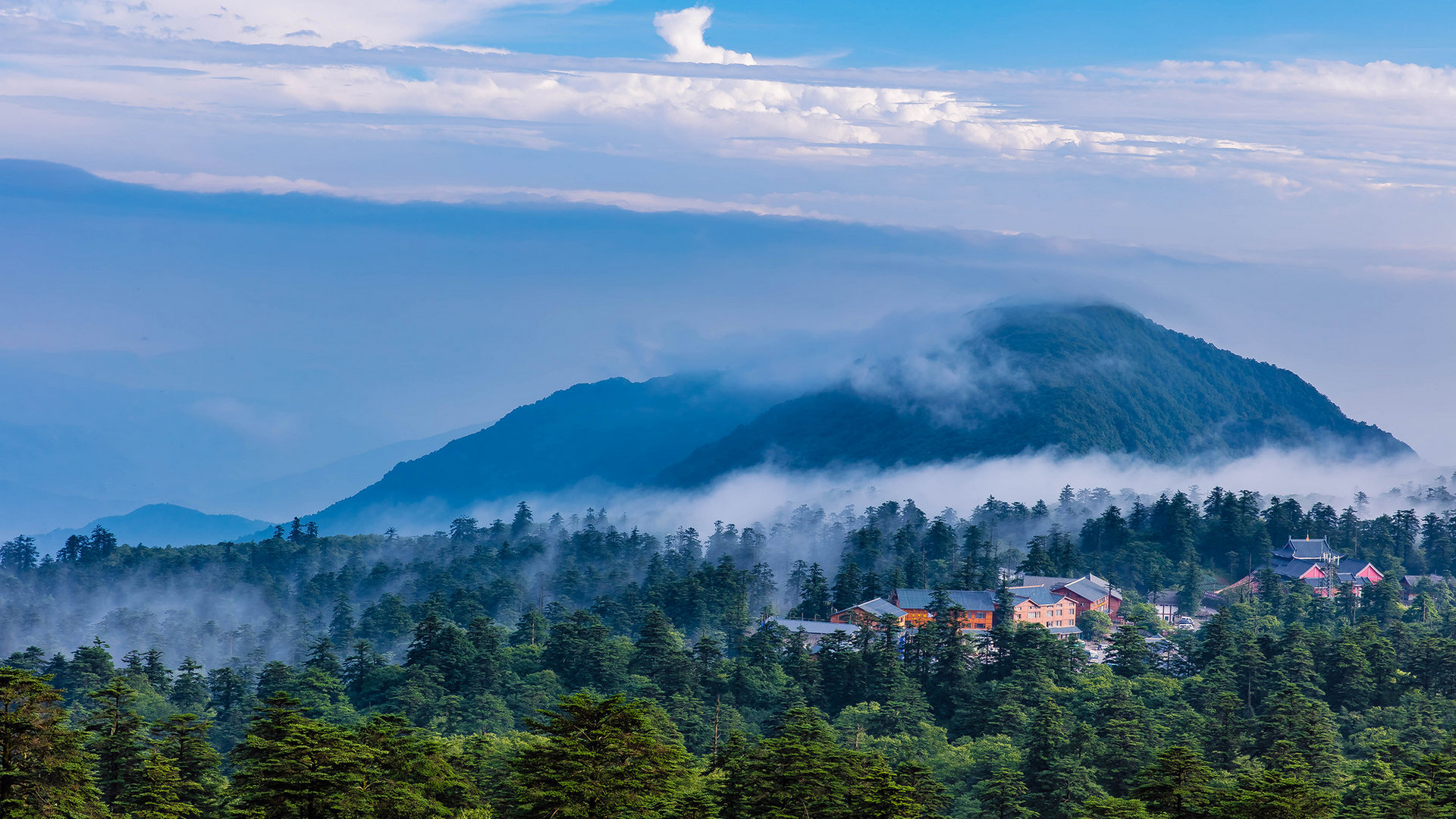
Main attractions of Mount Emei
Golden Summit
Golden Summit is 3,077 meters(10,095 feet) above sea level. The sightseeing spots on the summit include the Copper Hall, the Silver Hall, the Golden Hall, the Copper Statue of Samantabhadra, the Hall of Avalokitesvara, the Viewing Terrace and the Cliff of Self-sacrifice. The terrace and the cliff are the ideal places on the summit for visitors to view the Four Natural Wonders. The wonders are the Sunrise, the Sea of Clouds, the Buddhist Halo, and the Sacred Lamp.
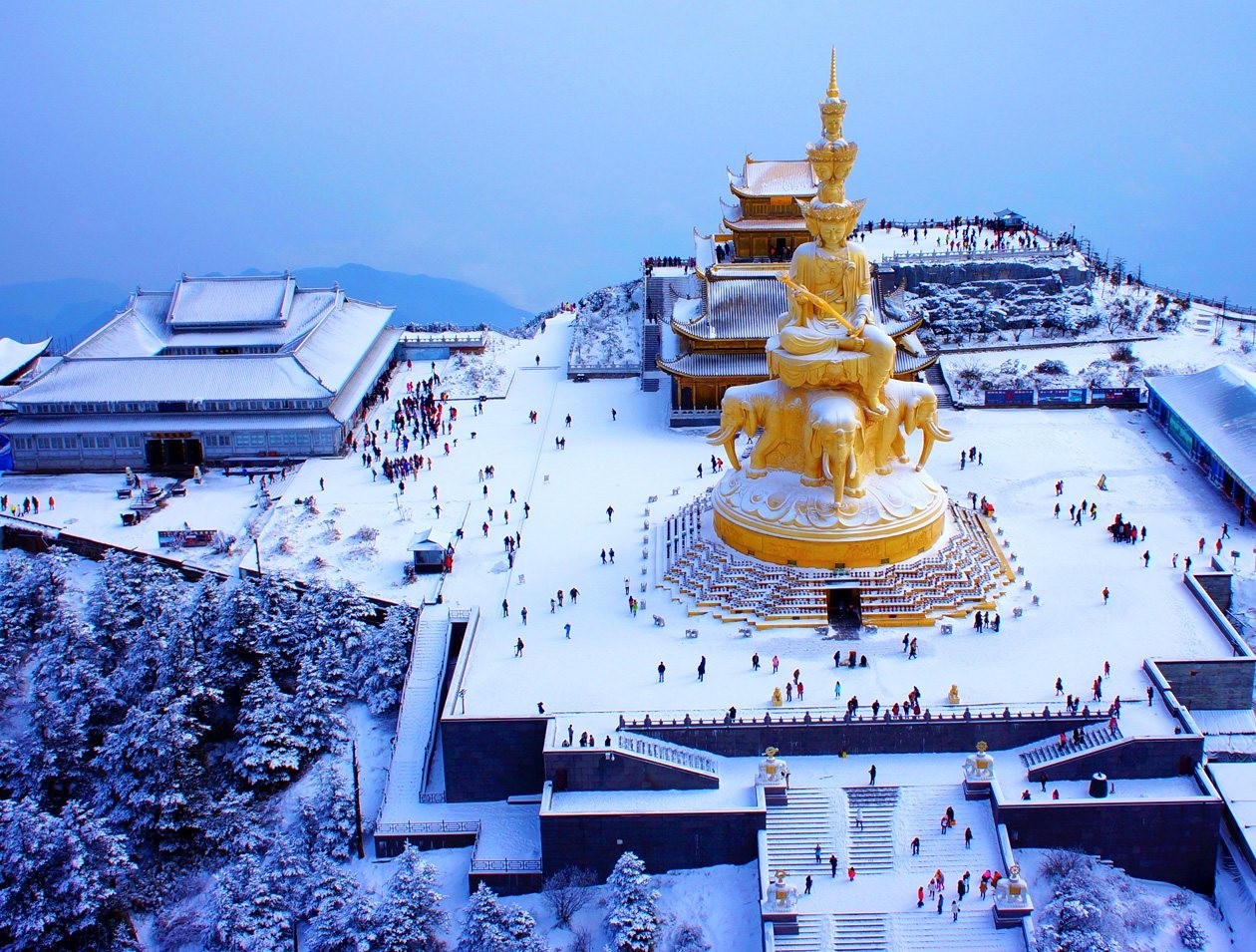
Huazang Monastery
Located on the Golden Summit, Huazang Monastery is also called the Copper Hall. Its full name is the Light Everlasting Huazang Monastery. It is said to be the earliest Buddhist monastery built in Mount. Emei. According to the historical records, in the Eastern Han Dynasty, Samantabhadra Bodhisattva revealed himself on the Golden Summit. It was witnessed by an aged man, Pu Gong. In order to commemorate the occasion, Pu Gong built a temple and named it as Puguang Hall or Zudian Hall. Emperor Shenzong of Ming Dynasty renamed the temple as Light Everlasting Huazang Monastery during his reign(1573-1620). In 1854, a statue of Samantabhadra was placed in the hall for worship. He was riding an elephant. The statue was copper cast and presented by Dalai Lama from Tibet. However, Huazang Monastery was destroyed several time by conflagrations. Reconstruction of the present buildings began in 1986, and completed in 1990.
Woyun Nunnery
Standing side by side, Woyun Nunnery is called the Silver Hall, because of its tin-tiled roof. It was built during Jiajing Period(1522-1560) of Ming Dynasty.
Golden Peak Hall
Above the Copper Hall, the Golden Peak Hall is the highest building on the Golden Summit. It is devoted to Samantabhadra Bodhisattva.
The Statue of Samantabhadra
It is a gold-gilded statue, made of copper, 620 tons in weight, and 48 meters in height. The statue was completed in 2006. It is the largest statue of Samantabhadra in the world.
The Four Natural Wonders on the Golden Summit
The Four Natural Wonders are the Sunrise, the Sea of Clouds, the Buddhist Halo and the Sacred Lamp. Visitors are able to view the sun rises over the summit about 200 days a year. But they have to stay overnight in a hotel on the summit. It is a three-stars level hotel with quite a high accommodation price. The Sea of Clouds is most likely to appear in summer and autumn. The Buddhist Halo only occurs about 80 days a year. The Sacred Lamp is enabled to appear with four natural conditions. It happens at mid-night after the rain has just stopped, when there is no moon in the sky, no cloud below the peak, and no breeze on the mountaintop. Compared with the halo, it is even less probable to view the Sacred Lamp.

Wannian Monastery
Wannian Monastery was built in 401, founded by Huichi Master of the Eastern Jin Dynasty. It was originally named as Samantabhadra Monastery or Puxian Monastery in honor of Samantabhadra. The monastery was reconstructed and renamed as White-water Monastery in Tang Dynasty. During the reign of Emperor Shenzong, it was destroyed by fire. The emperor had people reconstruct the monastery and renamed it as “Shengshou Wannian Monastery”. Shengshou means “imperial longevity”, and Wannian “10,000 years”. The current buildings in the monastery could be dated back to 1600. The main building in the monastery include Maitreya Hall, Avalokitesvara Hall, the Domed Hall, Mahavira Hall and others. It is the largest monastery in the whole mountain. The highlight is Domed Hall. It is called Wuliang Hall. Wuliang means ‘no beam”. The hall is made of bricks without any beam or pillar. It is considered as a feat of architectonics. A copper-cast statue of Samantabhadra is placed in the hall. Emperor Taizong of Song Dynasty(939-997) offered 150 kilograms of gold for casting the statue. It was completed in 980. Samantabhadra is riding his six-tusks white elephant. The statue is 7.38 meters in height, 62 tons in weight.
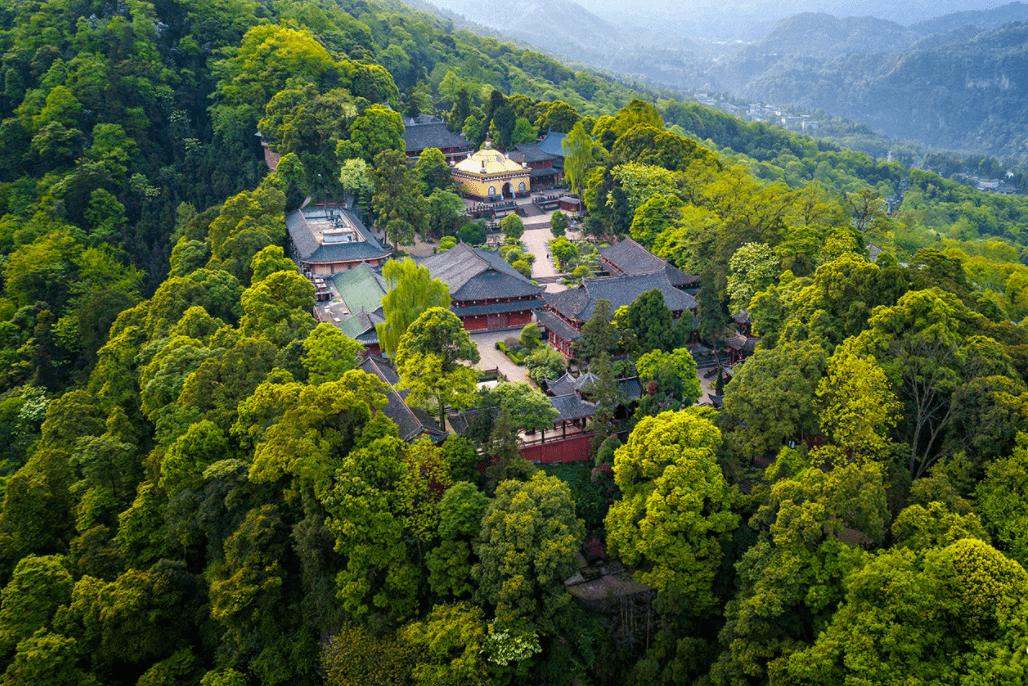
Fuhu Monastery
Fuhu Monastery is located nearby Baoguo Monastery. It was originally built Jin Dynasty9266-420). The present buildings could be traced back to 1651. It has three wonders, including an inscription written by Emperor Kangxi(1654-1722), a copper pagoda, and a hall of Arhats. The inscription reads Ligou Yuan. It means literally “no-dust yard’. All the buildings of the monastery are sheltered and intertwined with tall trees, but it is incredible that the withered branches and leaves fall but never remain on the roofs of the buildings all year around. Upon hearing it, Emperor Kangxi composed the inscription. The inscribed board still hangs on the entrance of Puxian Hall. The Copper Pagoda was cast in 1342, and moved to the monastery in 1982. The pagoda has 7 side and 14 stories. It is 5.8 meters(19 feet) in height. Its surface is carved with the Buddhist Huayan Scripture and 4,700 Buddhist figure images. The Hall of 500 Arhats is place at the right of the Grand Buddha Hall. There are 499 statues of Arhats in the hall. Why is it called Five Hundred Arhats’ Hall? Because there is always a monk at the entrance of the hall burning incense, 499 statues plus one monk is 500 Arhats. When Chinese people go to visit the Five Hundred Arhats’ Hall, they usually count the Arhats for fortunetelling. Walking along the rows of Arhats, a visitor starts counting in random by the number of his or her age. The image he stops at has its own number and name. He tells the monk the number or name, and takes a note back. People often do it just for play.
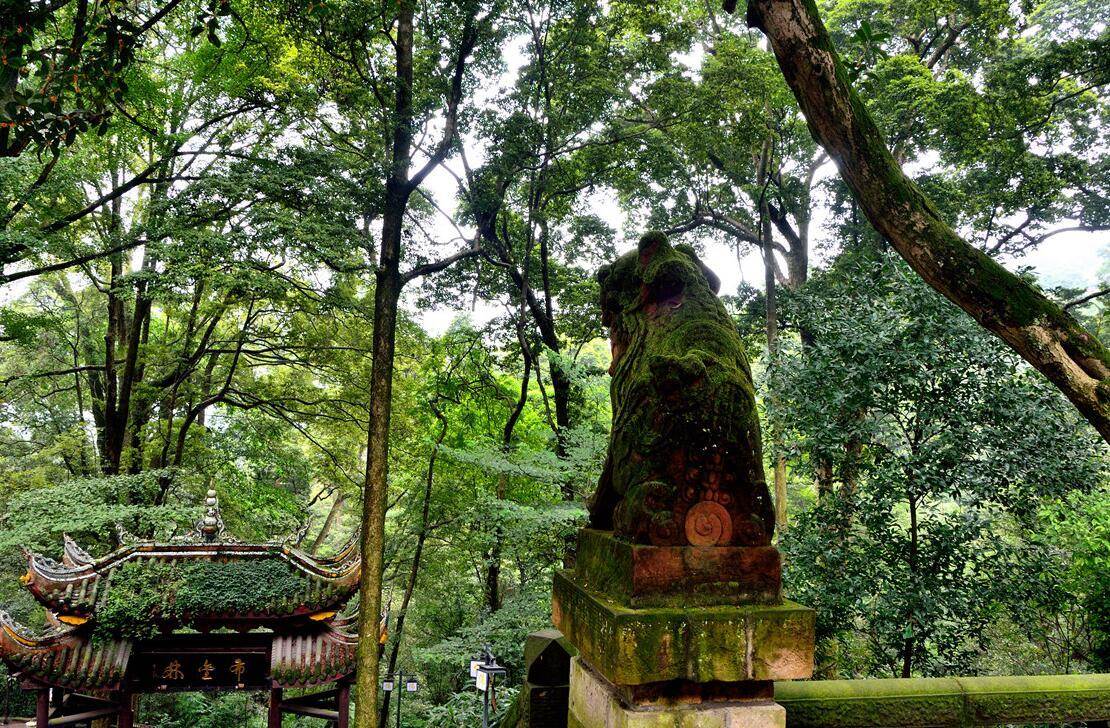
Qingyin Pavilion Monastery
Qingyin Pavilion Monastery is located at the place where the Black Dragon Stream and the White Dragon Stream converge. It was built in Tang Dynasty, and rebuilt several times. The present buildings was completed in 1917. One of the top ten landscapes can be viewed near the monastery, which is called the Two Bridges with Qingyin Pavilion.
Monkey’s Territory
There are around three hundred monkeys inhabiting the mountain. They are divided into three groups. They belong to Tibetan Macaque family. The monkeys are fierce and aggressive. When you come across them, you’d better to keep a certain distance from them.
Hongchun Monastery
Hongchun Monastery was built in Emperor Shenzong’ reign. It is located under Tianchi Peak, 1,120 meters above the sea level. It is one of the top ten landscapes in the mountain, which is called the Morning Rain at Hongchun Monastery.
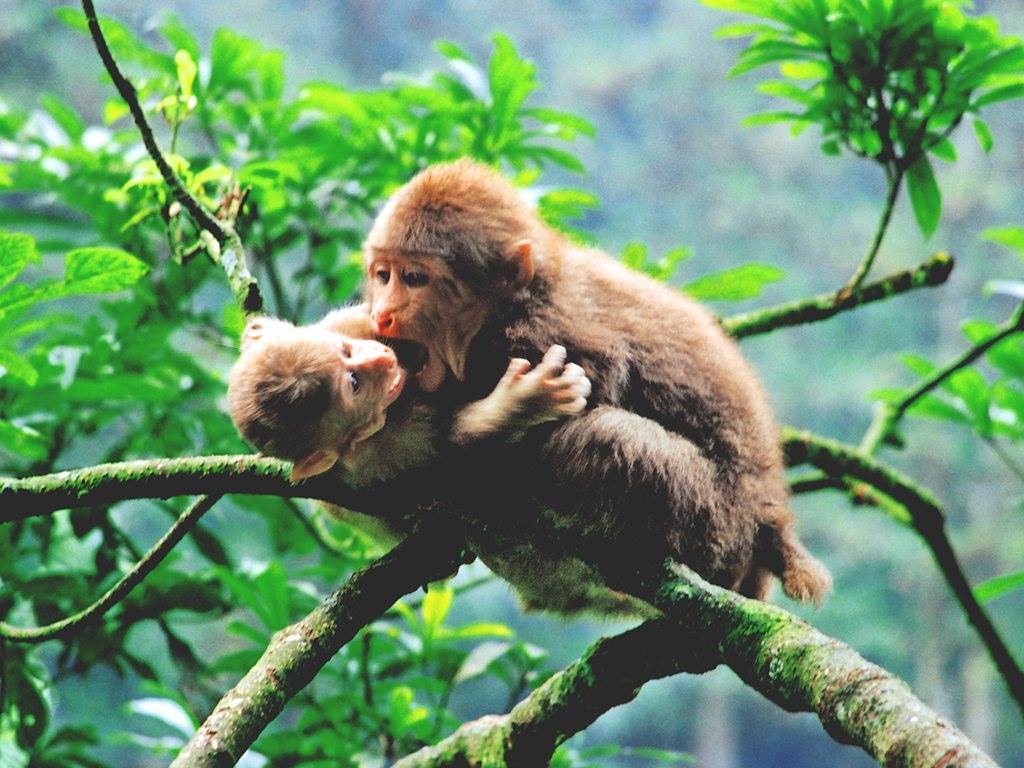
Xianfeng Monastery
Xianfeng Monastery was built in 1281. It is named after a cliff nearby, Xianfeng Cliff. In fact, Emei Mountain is also a famous Taoist mountain. It is the No.7 Celestial Cavern in Taoism. There is no Taoist temple in the mountain at present. But we can still find some traces of Taoism in the mountain. For example, both Taoist gods and Buddhas are enshrined in Xianfeng Monastery. Xianfeng Monastery is the ideal place for hikers to spend the first night during their hiking.
Baoguo Monastery
Baoguo Monastery is located at the foot of the mountain. It was built in 1651, founded by a Taoist priest, Mingguang Master. He felt sorry that Taoists and Buddhists struggled for gaining more followers in ancient time. The master vowed to build a monastery that would contain the figures of Confucianism, Taoism and Buddhism. By the support of local officials, the monastery was completed in one year. It was originally named as Hui Zong Hall. Hui Zong means religions assembled. Memorial tablets were placed in the hall for worship, which were devoted to Samantabhadra Bodhisattva, Taoist Guang Cheng Zi, and Confucian Lu Tong. In 1702, Kangxi Emperor of Qing Dynasty renamed the monastery as Baoguo Monastery. Baoguo means dedicating oneself to the service of his own country.
There are four main buildings placed on a east to west axis in the architectural complex. The buildings are Maitreya Hall, Mahavira Hall, Seven Buddhas Hall and Samantabhadra Hall.
According to the traditional Chinese architectural practice, Maitreya Hall is generally placed behind the entrance gate as the front building of Buddhist monasteries. It contains four huge statues. The statues are usually made of wood or earth. They are called the Four Heavenly Kings. The heavenly kings serve as protectors of lands in four directions. They stand on both sides of the hall. The image of Maitreya Buddha is in the middle of the four kings. He is also known as the Laughing Buddha among Chinese people. He has a big belly, always sitting with leg crossed. The big belly conveys that he has good patience.
Veda always stands behind Maitreya. He is holding his weapon, a pestle. Veda serves as the protector of Buddhism. He is considered as the No.1 warrior in Buddhism. It is said that Veda protected the body of Siddhartha, the founder of Buddhism, when some devils stole it away after the founder passed away. Veda is always facing the Mahavira Hall.
Mahavira means great hero or great Buddha. The hall is called Great Buddha Hall in Chinese. It is commonly the primary building in every Buddhist monasteries. The hall is commonly built to commemorate Siddhartha. Sakyamuni is a title granted to Siddhartha by his disciples. Some times, the Great Buddha Hall is enshrined with three Buddhas or seven Buddhas. In Baoguo Monastery, the hall is dedicated to Sakyamuni Buddha. There are some other statues placed in the hall. The top two disciples of Siddhartha stand closely to the main Buddha. They serve as the assistants of Sakyamuni Buddha. The images of top eighteen Arhats are set near the walls on both sides.
The image of Amitabha is laid behind the Mahavira Hall. He is the chief master in the Pure Happy Land in the West. He is facing the Seven Buddhas Hall. According to the Buddhist scripture, six Buddhas mastered the world one after another before Siddhartha descended to our world. The six Buddhas and Siddhartha are called together as the Seven Generations of the Main Buddha. There are several images behind the Seven Buddhas Hall. The biggest one is Avalokitesvara Bodhisattva, called Guanyin in Chinese. He is considered as the symbolization of benevolence and rescue.
The building in the backyard is devoted to Samantabhadra Bodhisattva. It is called Samantabhadra Hall. He is riding a six-tusked white elephant. According to the traditional Chinese architectural practice, the building laid at the end of the axis is the most important. Since Emei Mountain is the holy place of Samantabhadra, the hall devoted to him is placed in last along the axis.
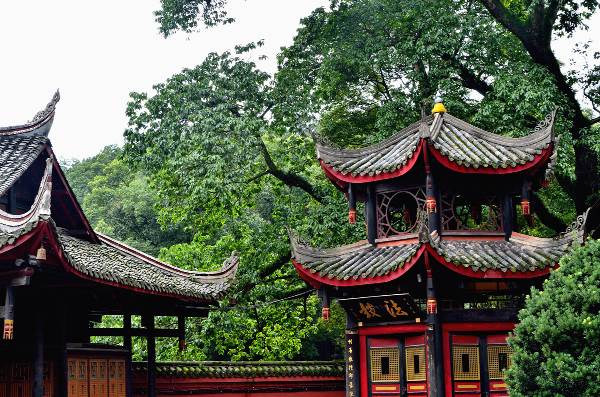
Mount Emei Travel Tips
One-day Golden Summit Tour
Take the sightseeing shuttle at Baoguo Bus Station or Huangwan Bus Station to Leidongping Bus Station, then walk about one and a half kilometers to the Jieyin Hall Cable Car Station. Ascend to the Golden Summit by cable car.
One-day Golden Summit with Wannian Monastery Tour
In the early morning, take the sightseeing shuttle at Baoguo Bus Station or Huangwan Bus Station to Leidongping Bus Station, then walk up to Jieyin Hall Cable Car Station, Ride the cable car to the Golden Summit. Descend to Leidongping Bus Station along the same way. Afterwards be transferred to Wannian Bus Station, and take cable car up to Wannian Monastery. After paying a visit to the monastery, step downhill along the winding path to WuxianGang Bus Station. On the way, you may pass by the White Dragon Cavern and Qingyin Pavilion.
Three-days Hiking Tour
Start hiking from Wannian Bus Station, pass by Shengci Nunnery. Then pay a visit to Wannian Monastery, and step downhill along the way to Qingyin Pavilion via the White Dragon Cavern. Afterwards, walk uphill along the path to Xianfeng Monastery, passing by the Monkey’s Territory and Hongchun Monastery. Spend the first night in Xianfeng Monastery.
Keep trekking along the path to Golden Summit via Yunxian Monastery, Xixiang Monastery(Washing Elephant Pool), Leidongping Terrace, Jieyin Monastery. View the sunset and spend the second night on the Golden Summit.
After watching the sunrise on the Golden Summit, take the cable car and sightseeing shuttle down to the foot of the mountain.

- $978.00
- 8D7N DAYS
01. Dagu Glacier, Arriving at the glacier of 4850m and staying with the wide and quite snow world, seeing No. 1 Glacier, and experiencing the powerful atmosphere of “standing on the highest mountain to view everything under their feet”02. …
Read More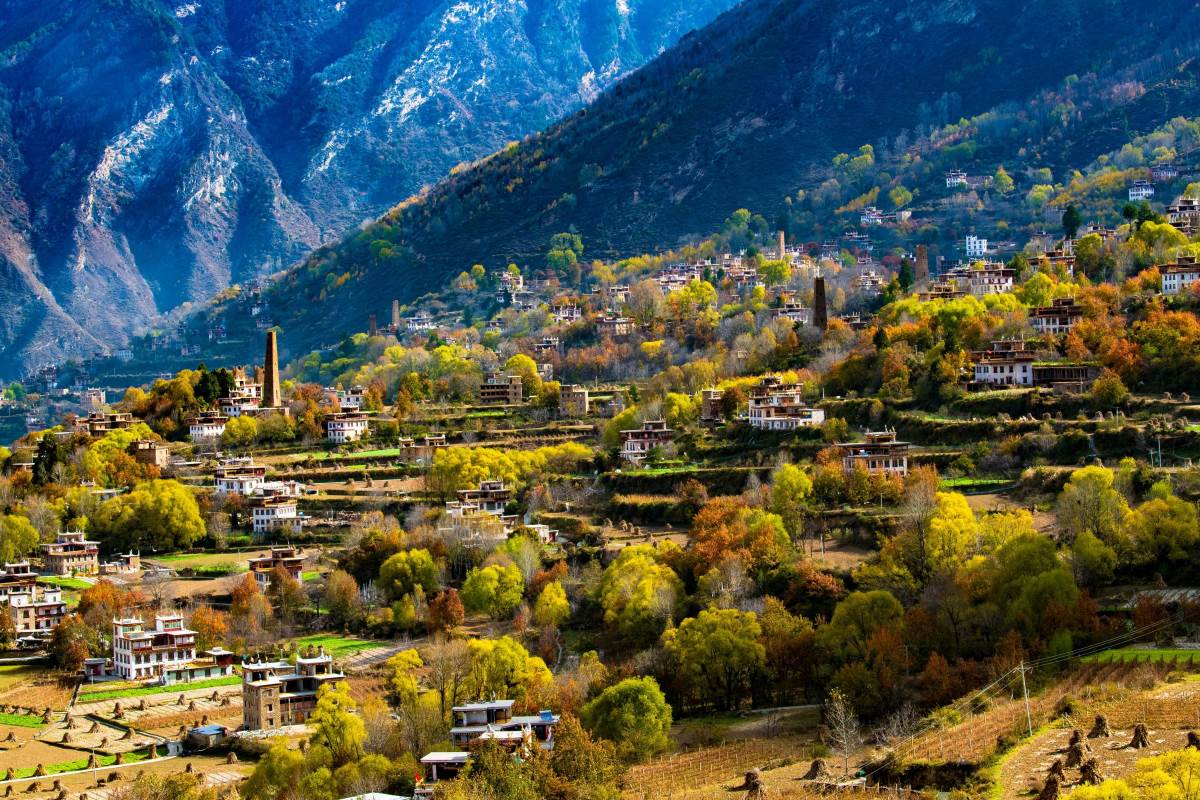
- $928.00
- 8D7N DAYS
01. Visit the world’s largest and most complete sanctuary for giant panda -Wolong Panda Reserve , where researchers are trying their best to release zoo panda to wild.02. Immerse yourself into the unique beauty of Western Sichuan in Mt Sigu…
Read More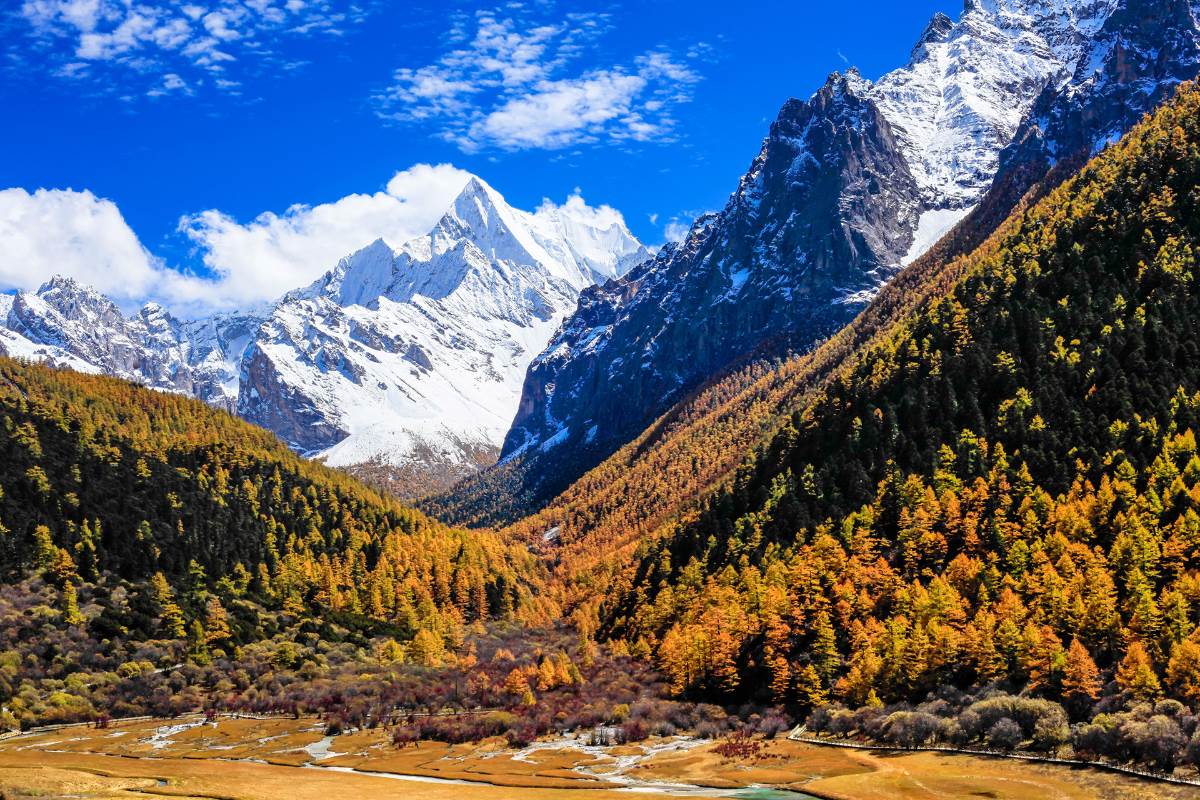
- $1028.00
- 9D8N DAYS
01. A classic photography tour deep into Danba, a county of watchtowers and China's top beautiful Tibetan villages, See different Tibetan people and also their unique Danba ancient stone towers, which was awarded as the top of the "…
Read More
- $548.00
- 6D5N DAYS
01. Visit Dujiangyan Irrigation System, explore the oldest and only surviving no-dam irrigation system in the world; and a wonder in the development of Chinese science.02. The famous place to enjoy the blossom of snow pear flowers in Jinchua…
Read More
- $USD598.00
- 6D5N DAYS
01. 2.5 days exploring Mt Siguniang by visiting Shuangqiao Valley and hiking Changping Valley and Haizi Valley, immerse yourself into the unique beauty of Western Sichuan in this Siguniang Trekking tour. Have a remarkable hiking to the Mount…
Read More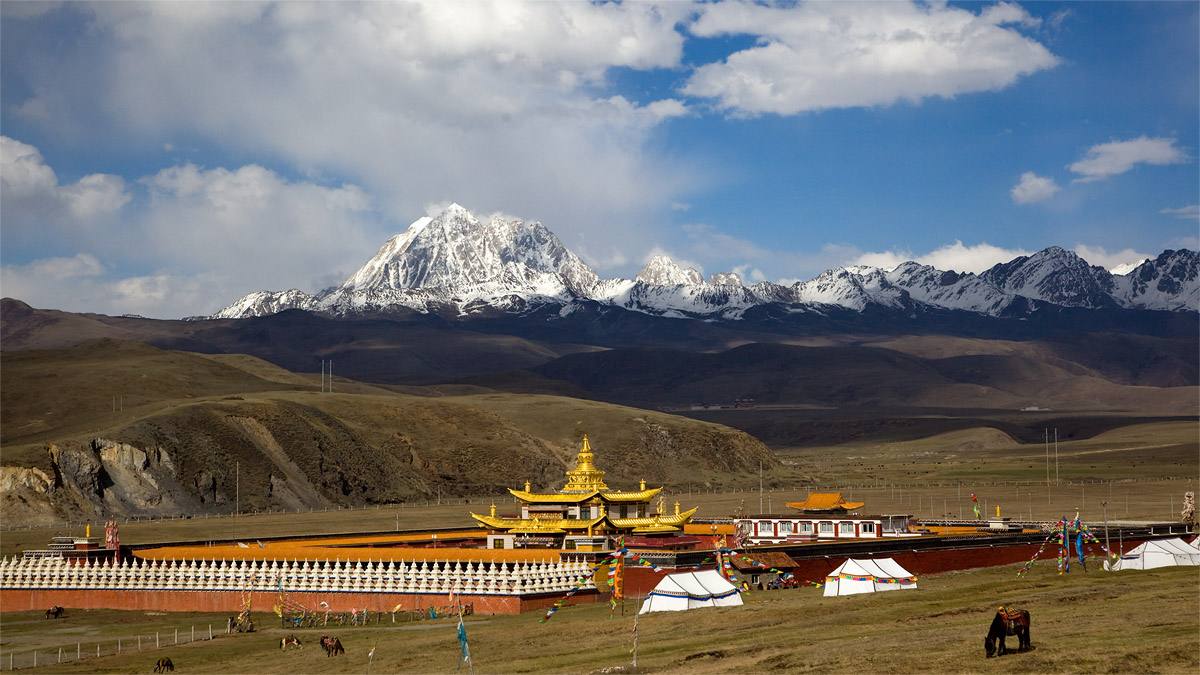
- $USD898.00
- 8D7N DAYS
01. Along the way, no matter on bus or during hiking, we will be surrounded by vast grasslands, forests, lakes and spectacular snowy mountains. Immerse in the amazing views, and feel the beauty of being close to nature!02. Walking in Danba T…
Read More
- $788.00
- 7D6N DAYS
01. A great tour of a visual feast to explore two magnificent World Heritage Site around Chengdu - Leshan Giant Buddha and Mount Emei in a leisure way.02. Enjoy the “king of shu mountains” Hailuogou Glacier , Hiking through the attractive …
Read More
- $1380.00
- 11D10N DAYS
01. A holy pilgrimage route that covers several topical Tibetan Buddhists monasteries in west Sichuan.02. splendid nature sceneries include grassland, snow-capped mountains, plateau lakes etc, ancient Tibetan villages, sacred monasterious, a…
Read More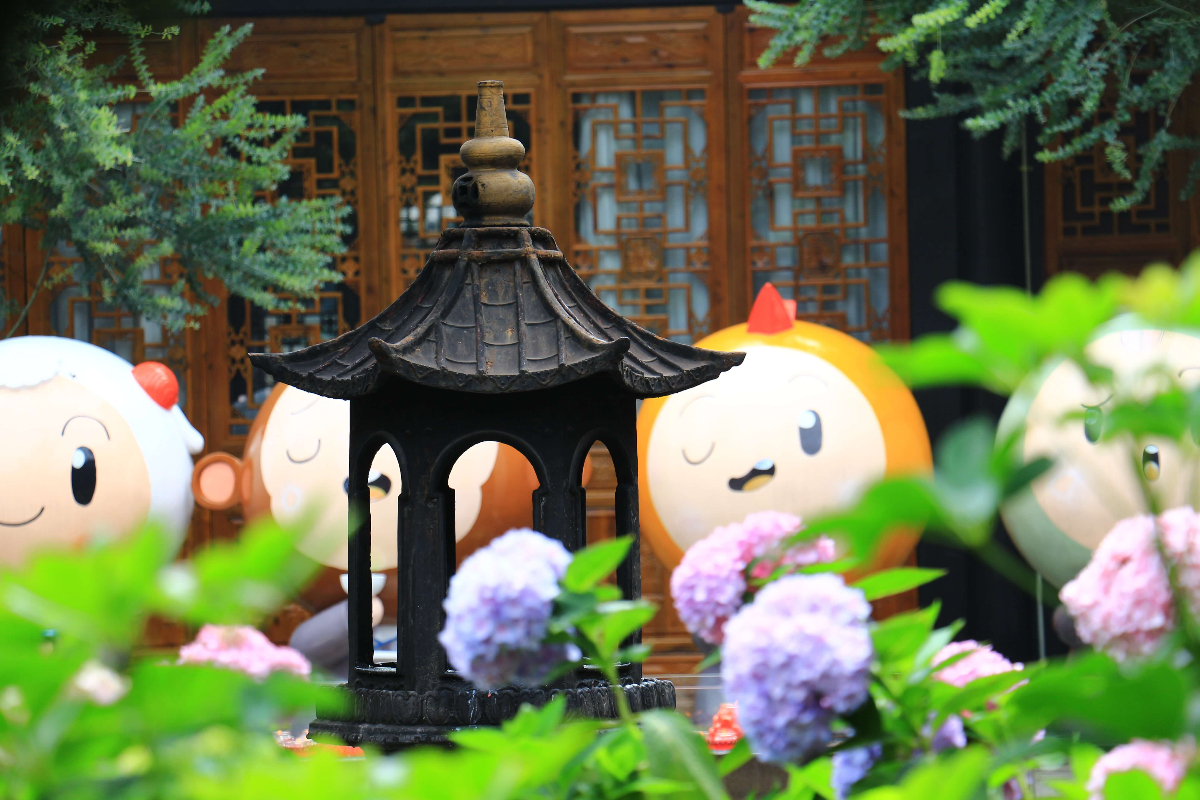
- $728.00
- 7D6N DAYS
01.Meet the lovely pandas in the Panda Breeding and Research Center, Getting a close-up look at China's most iconic residents.02. Enjoying a cup of traditional Chinese tea and absorb the special atmosphere of Chengdu.03. Play with Sichua…
Read More
- $680.00
- 8D7N DAYS
01. Have a walk in the believed-to-be “Paradise of Photographers” Xinduqiao to experience local Khampa Tibetan landscape and local people,enjoying the endless sub-alpine meadow, scattered yaks in Xinduqiao.02. Visiting the highest town in …
Read More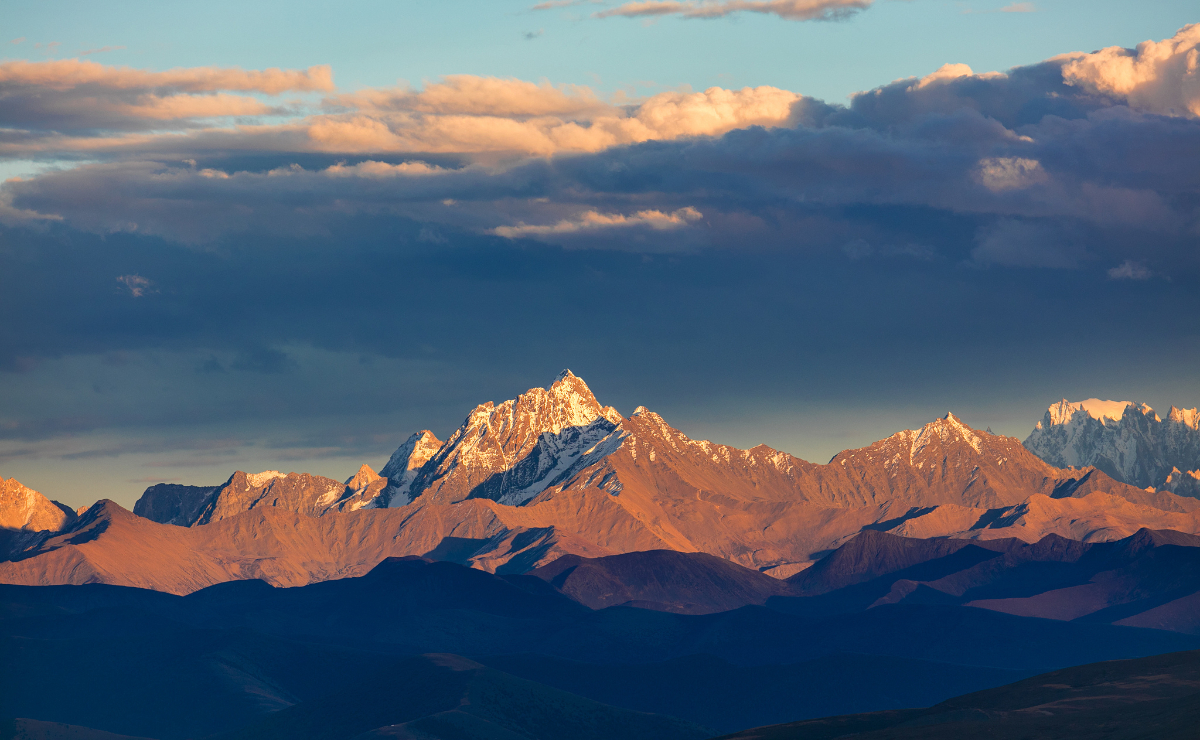
- $1380.00
- 9D8N DAYS
01. Trek beneath Minya Konka (7556m), the highest peak beyond the Himalaya, meet the distinctive Khampa and Minyak communities of the Kham region02. Be surrounded by vast grasslands, forests, lakes and spectacular snowy mountains. Immerse in…
Read More